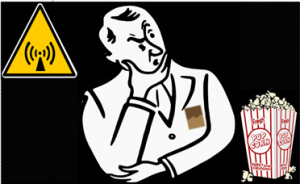—Roberta Manno, University of Zaragoza
“One day a dozen years ago, Percy Spencer was visiting the lab where magnetrons, the power tubes of radar sets, were being tested. Suddenly, he felt a peanut bar had begun to melt in his pocket…”
What would you do in this situation? Well Percy Spencer sent a boy out for popcorn’s box. When he held it near a magnetron, popcorn exploded all over the lab. Just one year later, in 1946, the first microwave oven “Radarange” irrupted into the scientific world.

There is no magic! MWs travel through plastic, glass and paper materials, the metals reflect them and the energy will be absorbed directly by the food. The water molecules begin to vibrate and the resulting friction heat the food up. The MWs are just powerful enough to cook food. No undesirable effects such as alterations of molecular or genetic structures occur, nor do MWs make food radioactive!
US Food & Drug Administration Regulations deeply studied the dangerous effects of microwaves. Interlocked switches stop the microwaving process as soon as the door is opened. Furthermore, in 1968 the RCHSA (Radiation Control for Health and Safety Act) limited the amount of microwave energy. The maximum leakage allowed is 10milliwatts of microwave radiation per square centimeters at 5 cm from the surface.
In the rush for the environmental industrialized society, microwave heating represents a winning option. Reduction of time, energy and environmental pollution (only electricity, not gas, charcoal or oil, decreases the carbon footprint) are its strengths. For this reason, several companies have already decided to adopt microwaves for thermal processing or drying (i.e. for ceramics, paper, leather, tobacco and pencils). The entry of microwave ovens in the chemistry laboratory has made it possible to carry out many transformations with greater efficiency and an easier work rate.
- Ravichandran and E.Karthikeyan, Microwave Synthesis – A Potential Tool for Green Chemistry. ChemTech Vol. 3, No.1, pp 466-470 (2011)
- A Brief History of the Microwave Oven < https://spectrum.ieee.org/tech-history/space-age/a-brief-history-of-the-microwave-oven>
- Michael Vollmer, Physics of the microwave oven. PHYSICS E DUCATION 39, 74-81 (2004)
- Code of Federal Regulations, Title 21, Volume 8 <https://www.accessdata.fda.gov/scripts/cdrh/cfdocs/cfcfr/CFRSearch.cfm?FR=1030.10>




